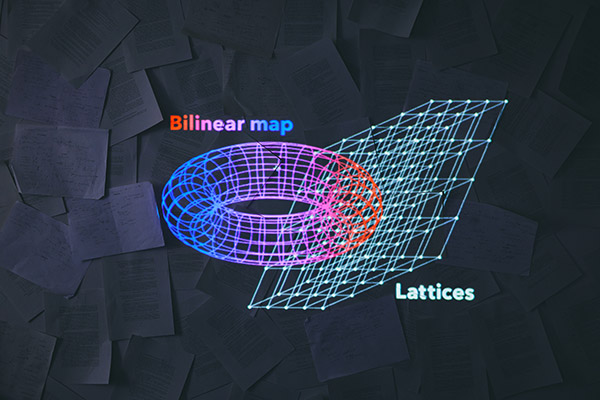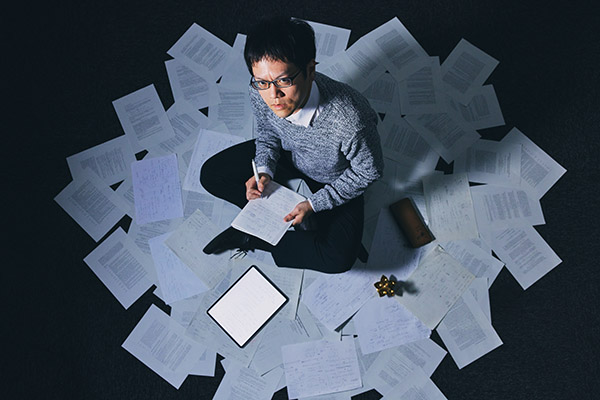Key Points
Just like fundamental research, cryptographic theory looks 10 years, even 100 years into the future. The development of encryption technology that remains secure even against the powerful capability of future quantum computers is highly anticipated. As a step toward this realization, we have designed the world's first efficient encryption method that will benefit future society.
We interviewed Senior Researcher Yamada Shota of the Advanced Cryptography Research Team, Cyber Physical Security Research Center, who received the AIST Paper Award for this research.
What makes this research amazingIn addition to invited lectures both domestically and internationally, including at world-prestigious workshops, there are also many follow-up studies.
Currently the first and only Japanese who received the best paper award at Eurocrypt, the top conference in the field of cryptography!
How did you feel about receiving such high interest from the global research community?
Yamada“In cryptographic design, we use algebraic structures known as the ‘doughnut type’ and ‘lattice-type’ approaches. The doughnut type structure has been studied for a long time, but is not very efficient, while the lattice-type structure is efficient, but it has not yet been possible to create a broadcast encryption using it alone. Research into combining these two structures has been attempted in the past.
This research, which developed on the work of previous studies, has led to a breakthrough in the efficiency barrier, and has led to the solution of an unsolved problem. At the time of the presentation, the new coronavirus was still in its early stages of spread, so the lecture was held online, but I remember receiving a huge number of questions. It was a great honor to be able to present the results of my research at a workshop in the United States, where prominent researchers from around the world gathered”.

How do you feel to receive such high recognition?
Yamada“At the workshop, I spoke in front of all the internationally prestigious award winners and future award nominees. It gave me a real sense that I had achieved results that were on a par with the leading research community and researchers.
In the US, where the workshop was held, there are many people doing very exciting research, and high-level discussions take place in everyday conversation. There are many opportunities to input and output ideas, and being in such an environment is positive for research.
In the cryptography field, researchers from India and China, many of whom have studied or lived in the US, have a significant presence and frequently contribute to impactful papers. Unfortunately, I missed out on the opportunity to study abroad due to the timing of the coronavirus, but I would still like to visit the US, where there is an environment where researchers gather, and research is accelerated”.
What do you think was the reasons for your award at such a top conference?
Yamada“I think it was the result of accumulating high-quality research. I wasn't aiming for the award, and it's not something you can aim for and get, so I was honored. The award has helped to spread recognition of my research results, and it has increased the opportunities for me to interact with overseas researchers and made collaboration easier.
The cryptographic scheme we developed this time has become a steppingstone for other schemes that have been developed based on the ideas we came up with. In fact, after our research, there was progress in broadcast encryption that uses only lattices. I think we have shown one possible directionto solve the unsolved problem. After the paper was published, the number of citations is still increasing, and there is a growing body of subsequent research that has built on our work.
This research will be a step forward in the development of technology to protect distributed content and cloud services and will greatly advance the field of cryptography in Japan”.

I want people like you to know about thisAdvancing technologies that protect distributed content and cloud services, this marks a significant step forward for Japan's cryptography field.
How will this research impact society in the future?
Yamada“Current cryptographic technology uses RSA and the discrete logarithm problem, but these will basically become useless once quantum computers become practical. However, quantum computers are not all-powerful either. The relationship between quantum computer technology and cryptography is easy to understand if you think of it in terms of the compatibility and types of competitive games. For example, fire-type attacks break through grass-type barriers, and rock-type barriers bounce off lightning-type attacks, so quantum computers are very effective against many existing technologies, but there are also technologies that have barriers that they cannot penetrate.
One such technology is broadcast encryption that uses only lattice-type cryptography, and although it has not yet been achieved, there is motivation to realize it throughout the field of cryptography. We believe that this research is a steppingstone that will point the way to achieving the “ideal cryptography” on the other side of the river”.
In what fields do you expect to see developments and applications in the future?
Yamada“Research is already underway to use our method to design a secure encryption for quantum computers. Broadcast encryption is a technology that protects content distribution and other services, and they have many users worldwide. If we set this as a smaller goal, then the larger goal is to develop a technology called attribute-based encryption that protects data in huge cloud services. We are aiming for that in the end.
Cryptography is a field of basic research that develops in a seed-driven way, rather than developing technology that can be used in society immediately. I think that the motivation of researchers will continue to produce high-performance technology in the future, rather than because content platformers want them”.
Who would you like to reach with this research?
Yamada“ I would be happiest if it reached students. Japan is a country that is strong in cryptography. I would like university students who have not yet decided on their career path to take an interest in it.
I was interested in applied mathematics, such as the kind of algorithm research that is mainly undertaken in mathematics departments, rather than the more abstract mathematics that is the main focus of mathematics departments, so I went on to study engineering. However, I was so bad at the hands-on experiments and programming involved in engineering that I even asked my teacher if I could change departments. It was then that I was introduced to the field of cryptography. I had a hard time reading papers in English, but gradually I became immersed in the field.
I think this is a field that is suited to people who want to use mathematics to help the world. When you think of appliedmathematics, you think of finance and economics, but there is also the interesting aspect of being able to use your own ingenuity and creativity in the research of cryptography. Abstract mathematics is also used, and those who have studied physics may have an advantage when it comes to quantum computing. People from all backgrounds, not just those from the sciences, can make use of this field. You don’t have to be skilled in everything; having one strong expertise is what matters most as a researcher. I would be happy if students could learn that there are many people in Japan who are active in the field of cryptography. I hope that this paper will lead to more people becoming interested in and studying the field of cryptography, and that it will be a step towards creating new cryptographic theory in 30 or 100 years' time”.
If you are interested in this research, please contact us.
